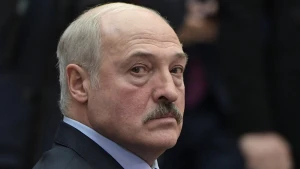
Only two directions of Russian offensive are dynamic, in south there are signs of Ukrainian counteroffensive: military results of the week
Only two areas of the Russian offensive – Bakhmut and Avdiivka – have some dynamics. Although Russian forces are already being depleted
Ukrainian military analyst, CEO of Defense Express military expert group, Serhiy Zgurets has shared his latest assessment of the frontline situation.
Bakhmut has become a frontline area on which more and more depends
Bakhmut is the hottest spot on the Ukrainian frontline. During the week, there were several meetings of the Supreme Commander-in-Chief's Staff to discuss the city's defense and provide the Ukrainian military with everything they need. The situation remains difficult. The enemy is trying to put pressure on the city from the south and north and to encircle the Ukrainian army from the sides. There are also attacks from the east. The Russians are trying to get into the territory of the metal plant, and the fighting is going on there. The Ukrainian Armed Forces have enough forces and means. The main issue is to hold the northern and southern flanks. 3.5 kilometers is the distance between Russian groups trying to reach two roads – one from Kostiantynivka and the other through Khromove – and they are being shelled. The Ukrainian military is monitoring whether Russian Orlan drones appear. If they do, electronic warfare systems are immediately activated, jamming them and preventing the enemy from directing artillery. Our guns are also activated to destroy firing points from which the Russian troops are trying to shoot at the highways. As a result, Ukraine's logistics units ensure the movement of ammunition and equipment to Bakhmut. Today, the dirt roads there have dried up and can now be used. These are other areas that make it easier to supply the Ukrainian military.
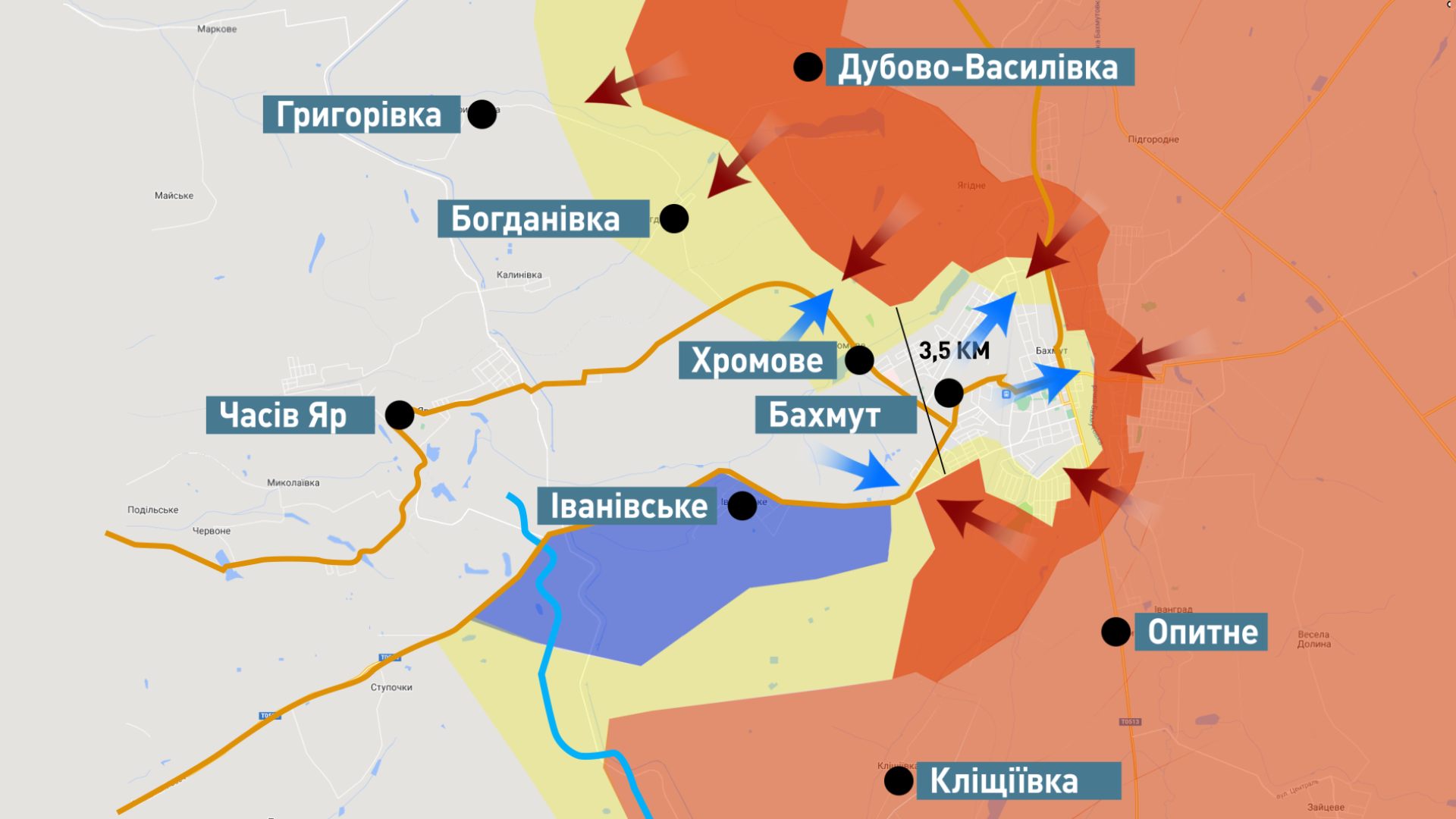
The Russian military, who realize that Bakhmut is being held very well, are trying to create a second ring of encirclement. They are moving to Dubovo-Vasylivka and Bohdanivka to create another ring of encirclement over Bakhmut. We understand the critical importance of the situation and the capabilities of the Ukrainian army to deter the enemy's offensive. In any case, Bakhmut will be held, because it is no longer a military or political issue, but a section of the frontline on which more and more depends.
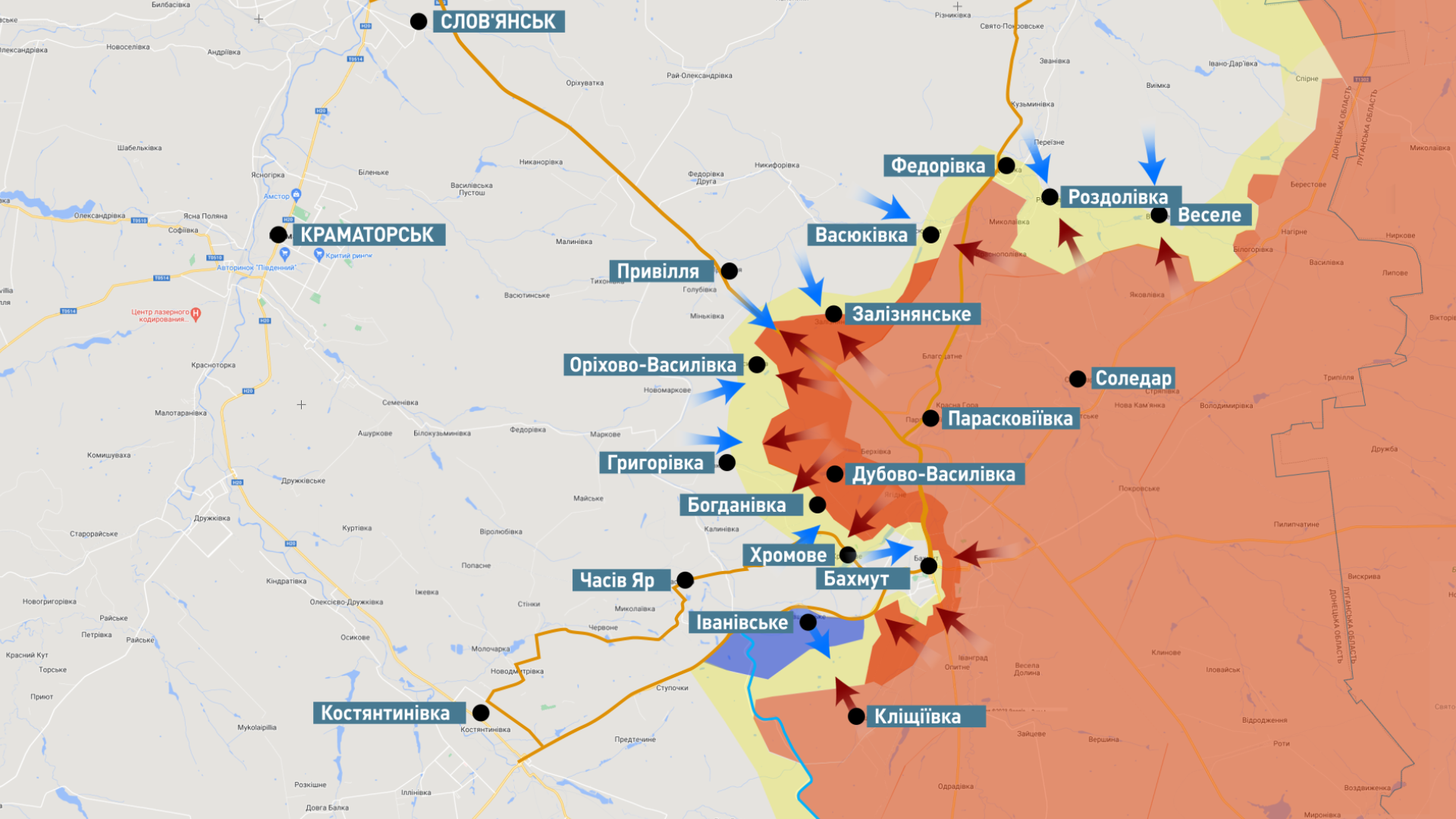
Bakhmut is of fundamental importance, we don't want other cities to become Bakhmut from the point of view of the Russian army, which destroys them. When we retreat from this city, it does not mean that Russian troops disappear. They will still be moving around. The approach of the AFU to destroy the Russian forces in this area, where we have a lot of forces and capabilities, looks quite optimal.
Only two directions of the Russian offensive – Bakhmut and Avdiivka – have some dynamics
Advancing along the highway to Sloviansk. There was a report from British intelligence that confirmed what we said last week about the deptetion of the Russian army and the exhaustion of its offensive potential. It now needs to be reinforced with both personnel and equipment. There is no point in advancing to Sloviansk because the enemy cannot complete the work in Bakhmut. They are trying to look for certain areas where our defense is less stable and expand their influence on Ukrainian territory, but this does not pose any threat to Sloviansk. The enemy does not have enough opportunities to advance with the resources that are constrained around Bakhmut. Only two directions – Bakhmut and Avdiivka – have some dynamics. However, Russian forces are already running out.
In Avdiivka, the Russian enemy is acting similarly to the Bakhmut scenario. They are trying to break through the defense head-on, also moving from Krasnohorivka and Vesele and trying to bypass from the south through Sievierne and Vodiane. But this is not working. The enemy has started using aircraft and bombs that hit civilian buildings. On March 17, the entrance of a multi-storey building was destroyed. This suggests that Ukraine needs to increase the number of air defense systems to minimize such risks.
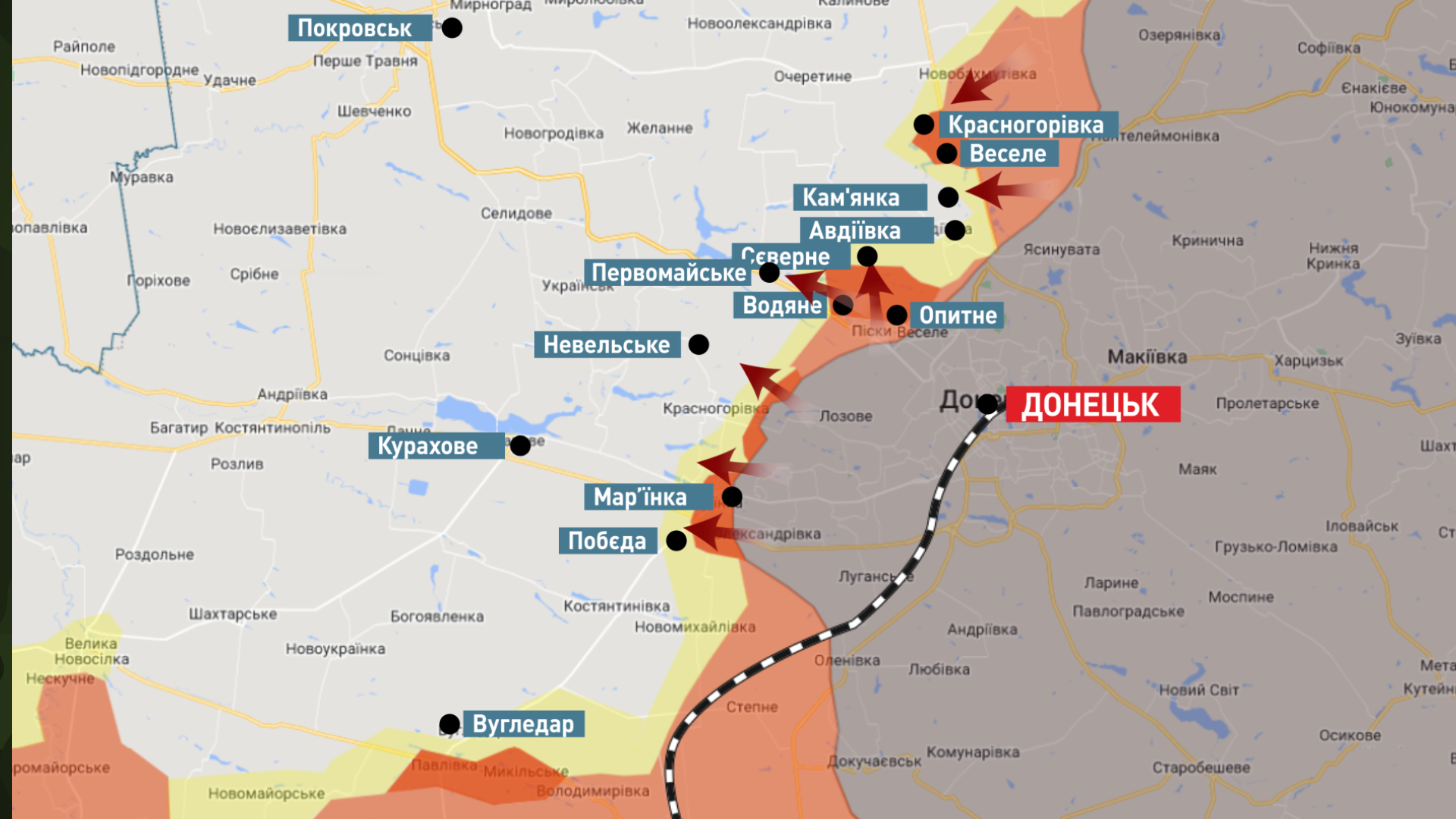
The Russian troops are using the old tactic of expanding the front line and finding weaknesses. It fails, especially when it faces counterattacks from the Ukrainian Armed Forces. This allows them to inflict the enemy's losses in any direction. Avdiivka remains a hotspot just like Bakhmut. I think the General Staff realizes this and understands what reserves and forces are needed to prevent the Russians from advancing.
Luhansk region: fighting does not change the front line
Kreminna-Svatove-Kupiansk is a line that reflects Russia's overall approach to push Ukrainian troops to the Zherebets River. The Russian army has up to four regiments of reserves in this area, which they can deploy to reinforce Russian troops here. This could lead to an escalation of fighting on this line. So far, the fighting along the entire line has not changed the front despite the intensity and tension. The enemy wants to create conditions to move to the Lyman and pose a threat to Sloviansk and Kramatorsk from this direction. To create pressure on this agglomeration.
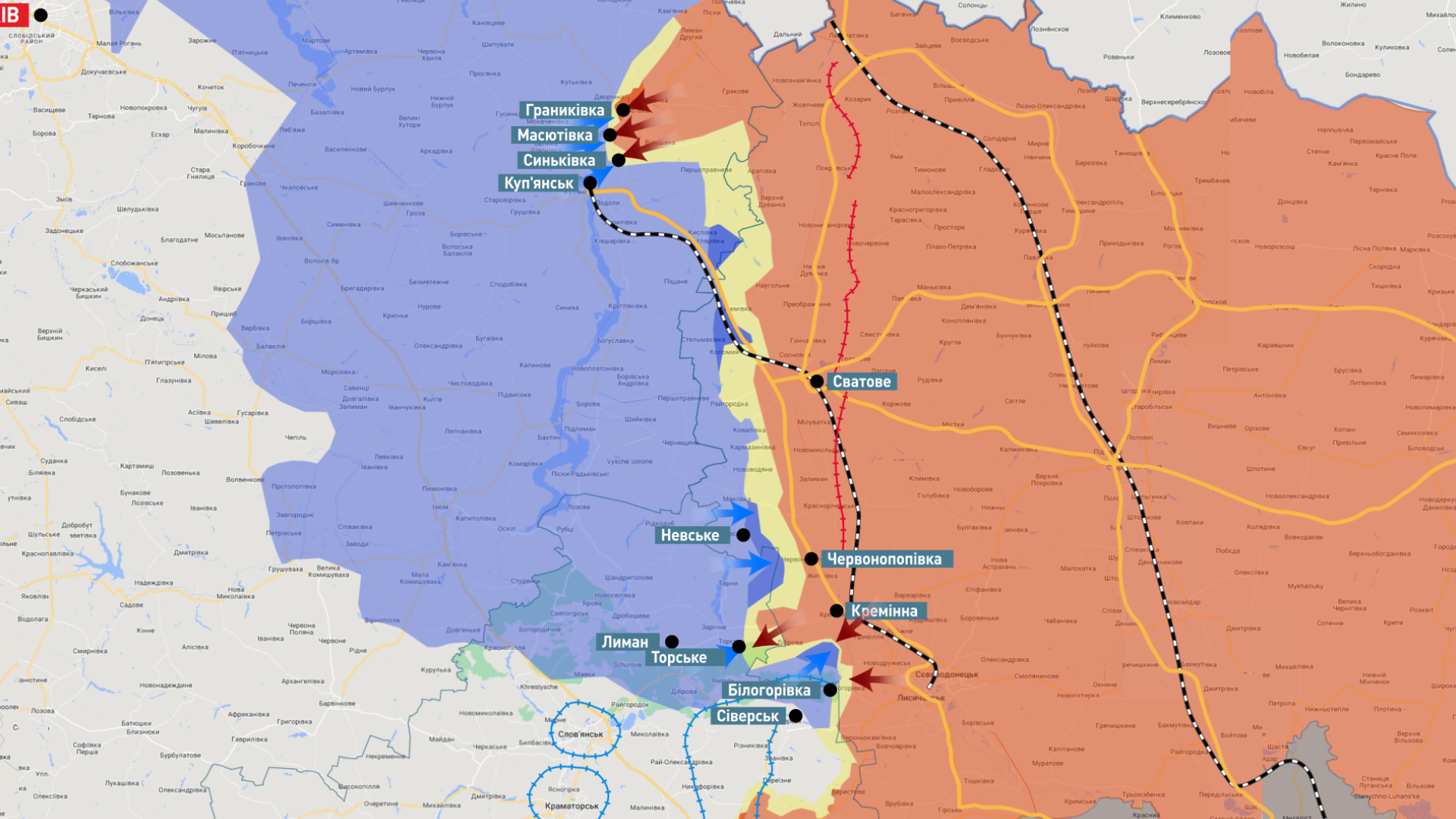
There are signs of a counteroffensive in the south
The southern front is starting to revive. Ukraine’s army has regular attacks on Russian targets. This is a sign that the expected counter-offensive has begun – work is being done in advance to destroy the so-called centers of gravity of Russian forces – command posts, ammunition depots, troop groupings, and so on. In the area of Vasylivka and Orikhiv, Ukrainian troops conducted limited attacks to analyze the Russian defense. We are starting to keep the enemy on their toes more and more. The Russian forces understand that the directions to Berdiansk and Mariupol are the most critical for their future security, as these are the most likely areas for the Ukrainian Armed Forces to launch an expected counteroffensive if weapons and ammunition arrive in time. Preparations for these actions are being made through the use of long-range or other systems that hit targets deep in the occupied territories.
We are working systematically, because in addition to destroying Russian artillery systems and radars, we are also destroying air defense systems. The combination of reconnaissance means, including those from Ukraine's partners, and long-range strike systems has moved to a high-quality systemic basis that makes it possible to increase the number of valuable targets that the enemy considers essential for its defense. The fewer such targets there are, the easier it will be for the Ukrainian army to advance during a counteroffensive.
The delivery of MiG jets to Ukraine is a reinforcement of air defense
MiG-29 is a light fighter aircraft. Ukraine will receive 13 jets from Slovakia and 4 jets from Poland. This is an intermediate palliative option, they are aimed at strengthening Ukraine's air defense. We need aircraft capable of destroying ground targets as well, because in the context of the offensive, Ukrainian brigades must be covered from the air. So far, Ukraine's partners have made an interim decision to strengthen Ukrainian air defense so that army can shoot down enemy cruise missiles. Some of these MiGs will be used for spare parts for fighters. The Air Force Command correctly states that Ukraine is waiting for F-15s or F-16s, because it is necessary to increase the potential of the Air Force not only with Soviet-era equipment, but also with more modern and powerful models.
- News









